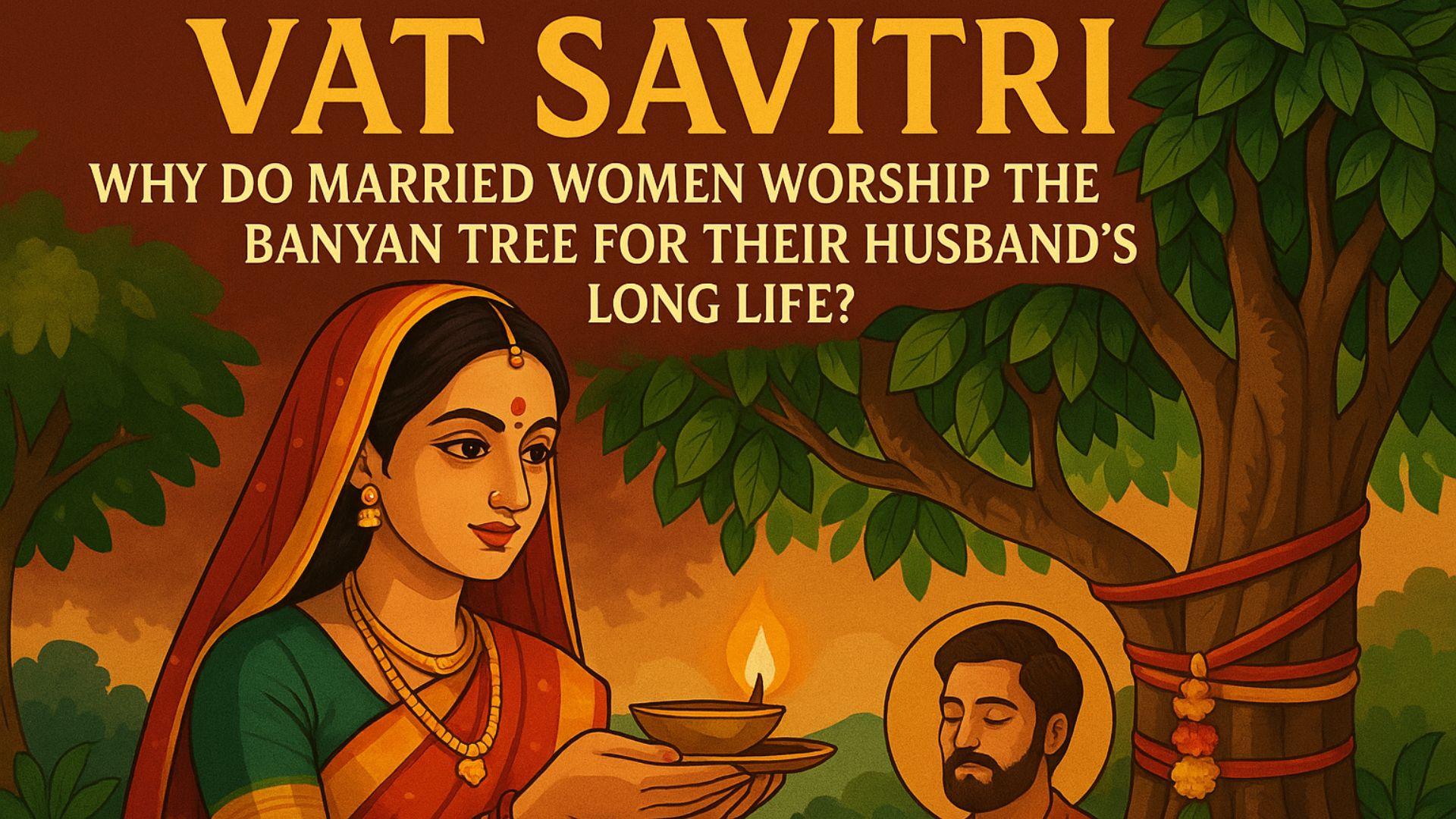Vat Savitri: Why Do Married Women Worship the Banyan Tree For Their Husband's Long Life?

Have you ever wondered why Indian women tie threads around a banyan tree on a summer full moon day, dressed in their finest traditional wear, with prayers on their lips? That’s not just ritual, it’s a living tradition of love, strength, and devotion. The festival of Vat Savitri isn’t just a cultural celebration; it’s a powerful narrative of loyalty, courage, and timeless faith. So, what it, and why does it still hold such importance in modern times?
What Is Vat Savitri and When Is It Celebrated?
It is a Hindu festival celebrated predominantly in the northern and western states of India, especially Maharashtra, Uttar Pradesh, Gujarat, and Bihar. It falls on the Amavasya (new moon) day of the Hindu month of Jyeshtha, which usually corresponds to May or June.
This day is dedicated to Savitri, a legendary woman who, through sheer determination and devotion, brought her husband Satyavan back from the clutches of death. Women observe this fast and perform rituals beneath a banyan tree (Vat Vriksha), symbolizing longevity and stability in marriage.
The Story Behind Vat Savitri: A Tale of Devotion and Strength
At the heart of this tradition is an ancient story drawn from the Mahabharata. Savitri, a devoted wife, was married to Satyavan, a noble soul destined to die within a year of marriage. Unfazed by fate, Savitri followed her husband into the forest on the foretold day of his death.
When Yama, the god of death, took Satyavan’s soul, Savitri didn’t break down, she followed Yama, engaging him with her intelligence and unwavering resolve. So moved was Yama by her love horoscope and loyalty that he granted her a boon. Savitri cleverly asked for her husband’s life back, and Yama agreed.
Rituals and Observance: How the Festival Is Celebrated
The customs vary slightly by region, but most rituals follow these steps:
-
Fasting: Married women observe a day-long fast, often without water, praying for their husband’s long life and health.
-
Early Bath and Dressing: Women take a holy bath early in the morning and wear their finest sarees, typically in red or yellow, signifying prosperity and fertility.
-
Puja under the Banyan Tree: The banyan tree is wrapped with sacred threads (katha), and women circumambulate it 7 times while chanting mantras.
-
Savitri Vrat Katha: They listen to or recite the story of Savitri and Satyavan.
-
Offering Prasad: Fruits, soaked gram, and sweets are offered to the tree and distributed among fellow devotees.
Why Vat Savitri Still Matters Today: 5 Key Takeaways
-
Celebration of Marital Bond: It highlights the strength of the marital relationship through the lens of mutual respect and dedication.
-
Cultural Continuity: It strengthens cultural identity by passing down rituals and stories, often explored in detail on platforms like Astro Live, which help preserve and explain traditional values.
-
Community Building: Women gather, pray, and bond as a community through shared faith.
-
Connection to Nature: Honoring the banyan tree signifies reverence for nature and sustainability.
-
Empowerment through Devotion: It shows that faith is not passive—it can be a powerful tool of courage and change.
Symbolism Behind the Banyan Tree in Vat Savitri
The banyan tree, or Vat Vriksha, isn’t just a backdrop for the ritual, it’s a living symbol of:
-
Longevity and Immortality - Its roots grow endlessly.
-
Stability - Its vast canopy represents security and protection.
-
Spiritual Wisdom -Regarded as sacred in Hinduism, it is a symbol of enlightenment.
By tying threads around the tree, women metaphorically root their prayers into something eternal and unshakable.
You can also watch:- Mantra to Attract Your Dream Partner FAST | AstroLive Marriage Tips
Conclusion: The Festival Is a Reflection of Unbreakable Devotion
In an age of fleeting relationships and fast-paced living, Vat Savitri brings us back to core values, loyalty, strength, and selfless love. It's a celebration not just of a woman's role as a wife, but of her power to stand firm against all odds. Every thread tied, every mantra whispered beneath the banyan tree, carries a legacy that connects past, present, and future.
FAQs: Common Questions About Vat Savitri
Q1: Can unmarried women observe Vat Savitri?
A: Traditionally, it’s observed by married women. However, some unmarried girls observe it with the hope of getting an ideal life partner.
Q2: Is Vat Savitri the same as Vat Purnima?
A: They’re similar in spirit, but Vat Purnima is celebrated on a full moon day in Maharashtra, while Vat Savitri is observed on Amavasya in northern regions.
Q3: What foods are allowed during the Vat Savitri fast?
A: Many women go on a strict fast without food or water, but some may eat fruits or soaked gram after completing the rituals.
Q4: Why is the banyan tree important on Vat Savitri?
A: It represents immortality and strength—qualities that align with the purpose of the vrat (fast).
Q5: How long is the Vat Savitri fast observed?
A: The fast is typically observed from sunrise to the completion of the ritual, usually around mid-day.
- Art
- Causes
- Crafts
- Dance
- Drinks
- Film
- Fitness
- Food
- Games
- Gardening
- Health
- Home
- Literature
- Music
- Networking
- Other
- Party
- Religion
- Shopping
- Sports
- Theater
- Wellness



